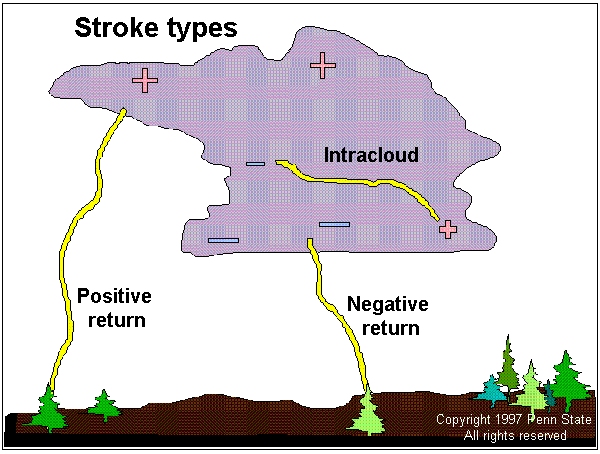




The mechanism for charge
separation within the cloud is not completely understood, but appears to
involve the imparting of a negative charge on falling large ice or graupel
particles as they collide with and impart a positive charge on convectively rising, small ice
and/or water droplets. This process tends to accumulate negative charge
at cloud base and positive charge at cloud top. Within the cloud, however,
there can be regions having charge of either polarity. Intracloud strokes
are then simply strokes between some oppositely charged pair of regions
within a cloud, and so occur in random directions. In contrast, return
strokes occur whenever the breakdown gradient between some point in the
cloud and a point on the earth below is exceeded. Most of the strokes from
cloud base, with its usual negative polarity, transfer negative charge
to the ground and are termed negative return (NR) strokes. Similarly,
those from some positive region of the cloud, often from the extended anvil
top of a large cumulonimbus cloud, transfer positive charge to ground and
are termed positive return (PR) strokes. The latter type usually
contributes only about 10% of all return strokes.
